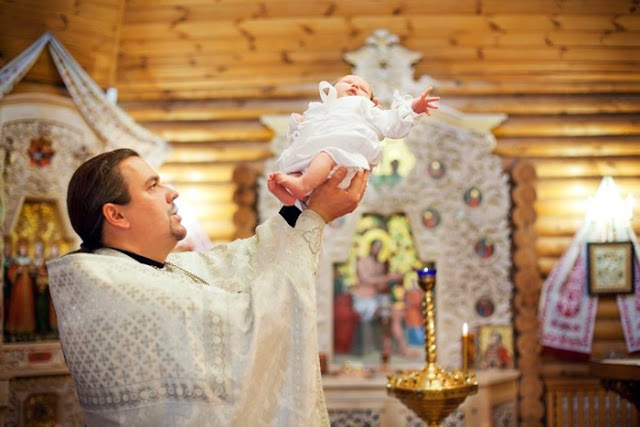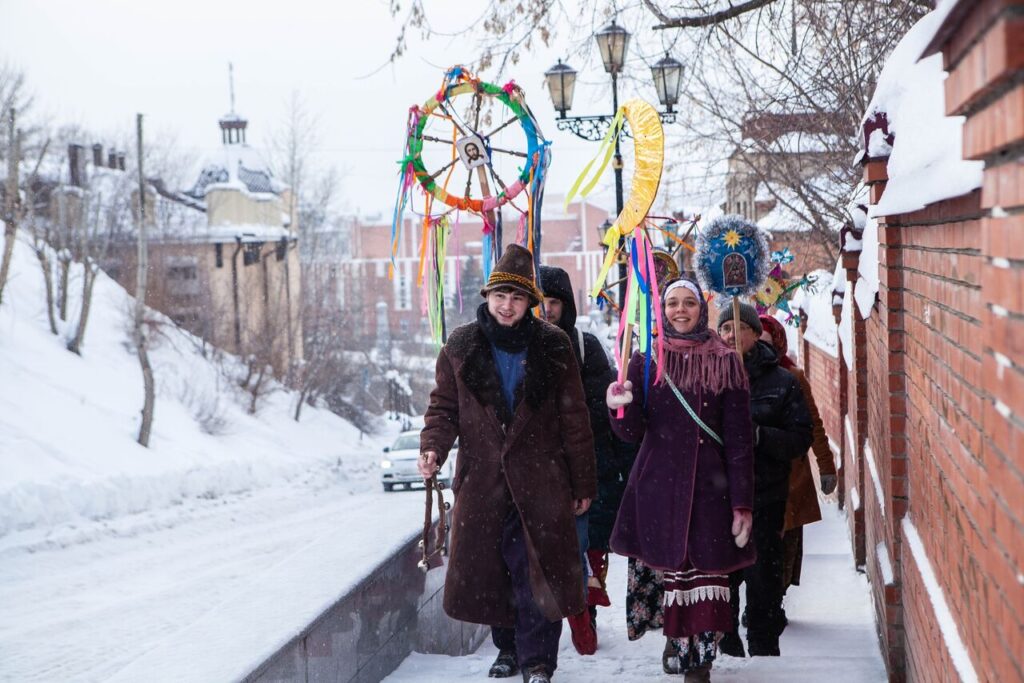
The first part of the Liturgy is called Proskomedia (Greek: προσκομιδή – bringing). During this preliminary part of the Eucharist, clerics prepare bread and wine, performing certain rites and prayers over them. While preparing our gifts to God, the clergy remember all members of the Church, from the canonized saints to the living and already deceased faithful. This act is accompanied with extracting some particles from the prosphoras. Theologians have attributed various meanings to this ritual. What is its history? What is its meaning and theological significance?
Background
Since the time of the Apostolic Church, the Church has been offering bread and wine to God in the Sacrament of the Eucharist, which are then mystically changed into the Body and Blood of Christ by the power of the Holy Spirit. However, over time, the faithful became increasingly aware of the cosmic nature of the Divine Liturgy and the invisible participation of the celestial powers and saints in it, and they began to bring and dedicate to God not only the Lamb Prosphora, but also other prosphoras in honor and memory of the Mother of God, the Holy Archangels Michael and Gabriel, the Forerunner of the Lord and the celebrated saints. When Christians brought a bread offering to the Lord in honor of a saint, they figuratively expressed their faith in the saint’s presence, called for his intercession, and thanked God for him. Bread in honor of the deceased and the living, especially for the Christians who were absent from the Liturgy, was offered on the altar. They were remembered by name in front of the altar of the Lord. We encounter a mention of additional prosphoras for the first time in the Typikon of Patriarch Alexis the Studite (†1034). Most likely, it was during the same historical period that particles were taken out of the prosphoras and placed together on the Diskos next to the Lamb, which was much more convenient because of the increased number of offerings, which the oblation table could no longer accommodate. The first source testifying to the presence of such particles is the Answer 9 to John the Hesychast by the Patriarch Nicholas III of Constantinople (†1111). These particles raised new theological questions: To what extent do these particles participate in the Sacrament of the Eucharist? Do they become the Body of Christ, and can one receive communion with them?
The View of the Righteous Nicholas Kabasilas
The Church did not immediately give a clear response to this question. Some theologians think that the particles extracted in honor of the deceased and living Christians are changed into the Body of Christ. Most probably, this was the view of the Righteous Nicholas Kabasilas (†1391), who claimed that a priest, when taking out a particle from “every loaf that is offered, makes it the sacred Gift” and that “all the bringing of the Gifts takes place in the memory of the Lord; and His death is manifested in everything” (Explanation of the Divine Liturgy, Ch. 10). These words can be understood in such a way that all particles become the Body of Christ; however, this interpretation is ambiguous. The position of St. Nicholas was upheld by St. Peter Mogila (†1647), who expressly stated the need for the priest to make it his intention for all the particles on the diskos to be consecrated into the Body of Christ and to give communion to the faithful with them. (The Trebnik of Met. Peter Mogila). The Catholic theology adheres to the same doctrine.
The Teaching of St. Symeon of Thessalonica
St. Symeon of Thessalonica (†1429), the great liturgist of the Orthodox Church, gave the first clear distinction between the Lamb and the commemorative particles, as well as specified their purpose in the divine service. The holy hierarch explains that the particles taken out in honor of the saints do not in any way change into the Body of Christ, which happens with the Lamb only, but that they are merely “the gifts, offerings, and sacrifices of bread that are offered to Him in their name.” Since they are close to the Body of Christ, these particles are also blessed by the prayers to the saints who are present at the Liturgy invisibly, and bring down the blessing on us who are in need of the saints’ prayers. This mystical reality is conveyed in the prayer a priest reads while immersing the particles into the Blood of Christ, “O Lord, wash away the sins of those we have remembered here with Thy honorable Blood and by the prayers of Thy saints (The Liturgy of St. John Chrysostom). “And this is the great mystery”, the Thessalonica bishop says. “God among men and God in the midst of gods, who have been made gods by Him who is God by nature and who was truly incarnated for them. And this is the future kingdom and the commonwealth of eternal life: God with us, both seen and partaken of” (Sym. Thessal. De sacra liturgia. 94 // PG. 155. Col. 281c -284a). Thus, the Lamb that sits on the Diskos, surrounded with commemorative particles, appears to be a symbol of God’s presence among His people. It is His presence that allows us to partake of Him.
So, the Church accepted the teaching of St. Symeon, which is reflected both in the canonical texts (The Rudder of St. Nicodemus and Agapius the Hagiorites, 1800), and in the liturgical practice; notably, during the exclamation Holy things to the holy the priest normally lifts up only the Holy Lamb and not the whole Diskos, and the particles are added to the chalice only after the communion of the faithful, in order not to accidentally give them as communion instead of the Body of Christ. The particles at the proskomedia are a visible and tangible expression of the Sacrament of the Church as the fellowship of saints and the residence of the Lord among those who believe in Him.




One minor point of clarification, the Greek word προσκομιδή means “oblation”. The other word frequently used for the Rite, πρόθεσις, means “laying before” as in “offering” (eg Hebrews 9:2).